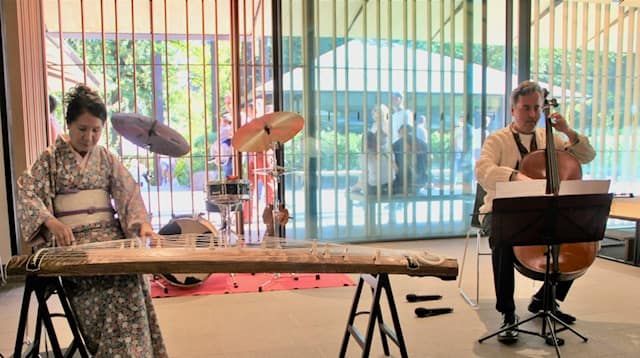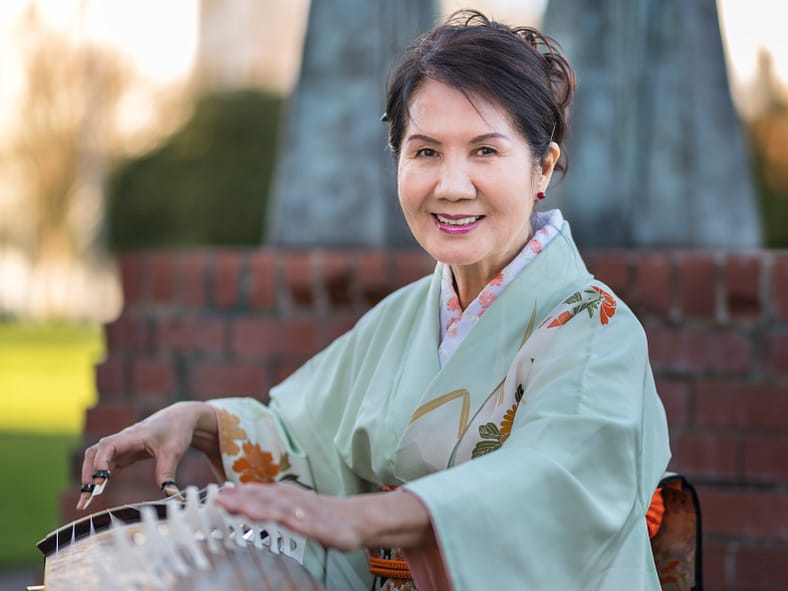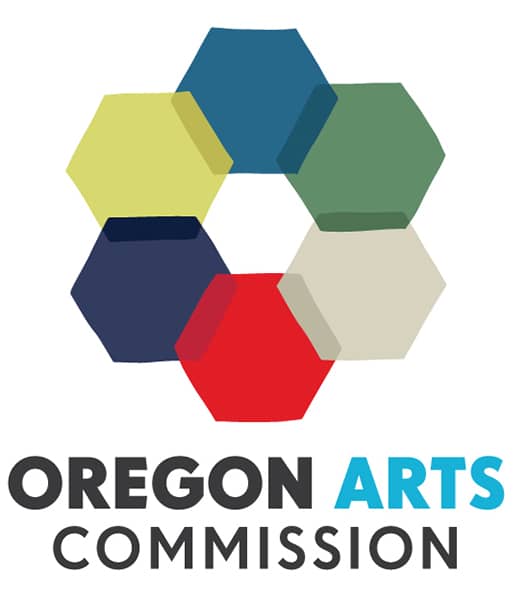
SamaZama Koto/Cello Duo is a collaboration of the Koto – a Japanese traditional musical instrument played By Masumi Timson and the Cello played by Joseph Harchanko. “Samazama” is the Japanese word for variety. The SamaZama Duo combines the esoteric nature of traditional and contemporary Japanese music with tango, jazz, blues and western classical music, blending the instruments and music of Eastern and Western cultures in a moving and uncommon musical synthesis. Their music deftly unites these two widely divergent instruments through traditional and contemporary Koto works to create a vibrant musical soundscape that soothes and inspires.
ARTIST BIO: MASUMI TIMSON
Masumi Timson is a performer and instructor of the Koto and Shamisen – traditional musical instruments of Japan. She holds a Master’s Degree in Music with a specialization in the Koto and Shamisen from Seiha Conservatory of Japanese Traditional Music, one of the most prestigious Koto schools in Japan. Masumi plays both classical and contemporary Koto music, and also sings Japanese classical songs with Koto and Shamisen accompaniment. She also enjoys collaborating with various western musical instruments to explore a wide range of musical genres, from jazz and tango, to western classical compositions by Bach and Mozart. Masumi has participated in many recordings of Pink Martini, and has performed with the band at various venues around the world, including Carnegie Hall, the Hollywood Bowl, and the Grand Rex Theatre in Paris. She also directs the koto club at Willamette University and teaches Japanese language and culture at Chemeketa Community College. We’re truly fortunate to have her as a cultural partner.

ARTIST BIO: JOSEPH HARCHANKO
Dr. Joseph Harchanko is an award-winning composer and cellist living and teaching in Salem, Oregon. He received his D.M.A. in composition at The University of Texas and holds Masters degrees in cello and composition from The Florida State University. He has written extensively for traditional ensembles and digital media. His music has been described as both “energetic and exhilarating” and “mystically alluring.” Dr. Harchanko is principle cellist of the Salem Orchestra in Oregon and a founding member of the Salem Cello Quartet. He performs frequently with his teenage daughter, Elena, under the name String Theory Cello Duo. Many of his compositions and performances are inspired by western landscapes. His works have been performed across North and South America, Europe, Asia, and Australia including performances at New York’s Carnegie Hall, London’s Colourscape, France’s Bourges and Videoformes festivals, and New Music in Tasmania.
ABOUT THE KOTO
The standard Koto is a thirteen-string plucked zither. It was introduced to Japan from China through the Korean Peninsula in the 7th century. The instrument has been part of the Gagaku court ensemble for over one thousand years, gradually becoming popular among the merchant classes of the Edo period (1600-1868). An important member of the traditional Sankyoku ensemble, along with the three-string Shamisen and Shakuhachi (bamboo flute), the Koto developed further in a solo capacity, eventually gaining its place as one of Japan’s most prominent musical instruments. Today a varied repertoire along with a wide range of playing techniques provides a wonderful palette of sound textures, making the Koto appealing to audiences the world over.

Portland Japanese Garden receives support from the Oregon Arts Commission, a state agency funded by the State of Oregon and the National Endowment for the Arts.
